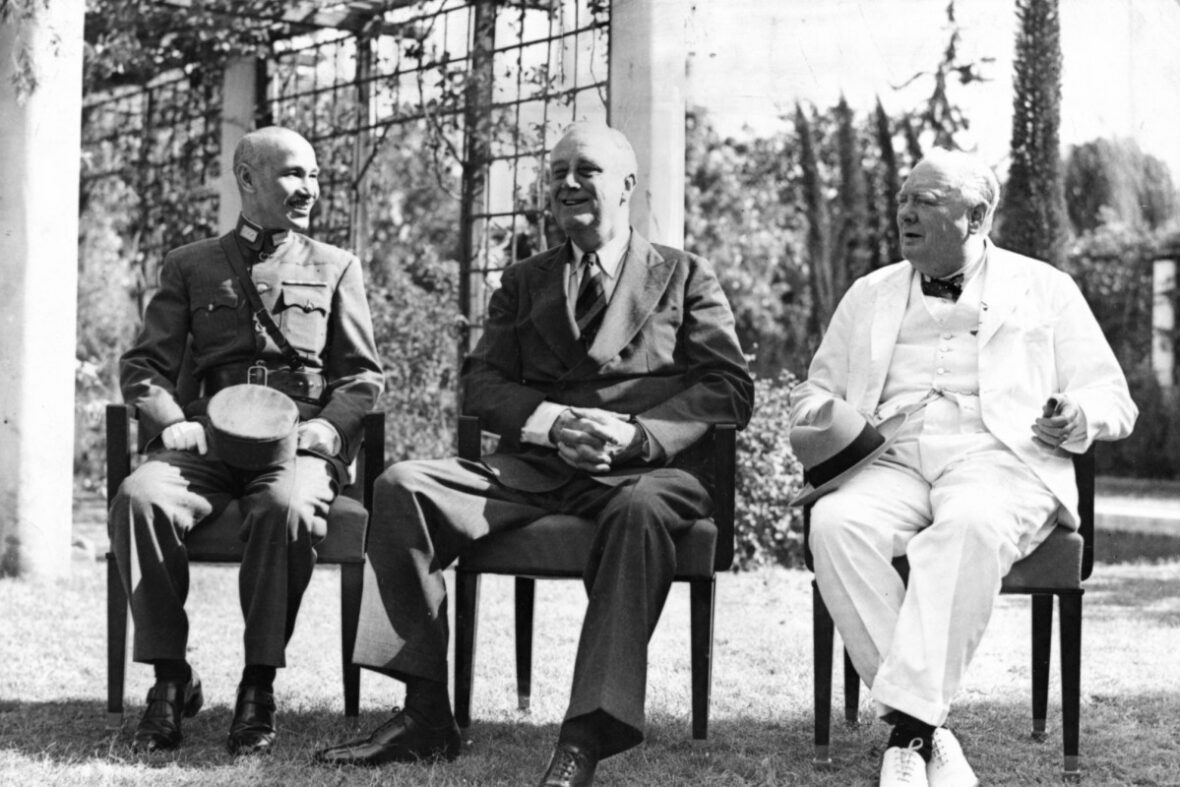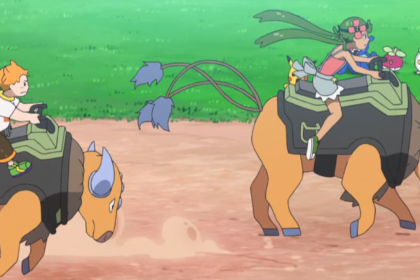Before we start with the 1943 Bengal Famine Facts, we will like to say a few words. The Dark Colonial British Rule – the British Empire – was one of the worst and darkest empires of all time. The empire built its wealth on the ashes of its colonies, specifically India. The British engineered two of the worst genocides in world and both of them were in Bengal Presidency under British rule. Those genocides hit Bengal – India’s rice belt – in form of famines. Take a look below for 30 sad and bizarre facts about the 1943 Bengal Famine.
1. Rice was the major crop produced by Bengal prior to the 1943 Bengal Famine. 88% of arable land went into rice cultivation and 75% of all crops produced in Bengal was rice. Bengal, at that time, produced 1/3rd of all rice produced in India.
2. Between 1901 and 1941, Bengal’s population saw 43% surge with population rising to 60.3 million from 42.1 million. Combined with archaic agricultural methods, heavy dependence on monsoon and absence of planned irrigation and of course, subsistence farming eventually turned Bengal into a net importer of food grains from net exporter. High population was pushed to the brink of malnutrition.
3. The land tenure system of Bengal comprised of three tiers with top being the zamindars (large land owners), jotedars or wealthy peasants making up the second tier and finally came ryots or peasants with small or no land holdings. Zamindars lost power by early 20th century. Jotedars became powerful. Ryots remained powerless and poor.
4. Great Depression (1929 to 1939) had hit India and formal and large credit entities vanished. Jotedars came in giving local credit to ryots for purchasing supplies like seeds and equipment, oxes etc. for cultivation. The interest rates with too high and failure to repay put ryots in perpetual debts, forcing them to sell their lands partially or fully to jotedars at low prices.
5. Roads were existent but very poor, which forced Bengal to depend heavily on water transport for moving both raw supplies for agriculture and other trades as well as finished goods. Enters the railways between 1890 and 1910. Railway embankment networks disrupted local drainage, diving entire Bengal into tiny compartment with improper drainage. Result? Areas of stagnant waters, increased flooding tendency, damaged crop production and increased silting. Conditions became ripe for water-borne diseases such as malaria and cholera.
6. Bengal has a diverse land profile. On the eastern side of Bengal is lighter and sandy sedimentary soil. Western Bengal has heavy clay profile. After monsoons, eastern side drained quickly, forcing farmers of central and western Bengal to leave the land fallowed. Eastern side of Bengal didn’t have much of that requirement. Fallowed lands once flooded led to breeding of malaria vector mosquitoes. With relatively slow drainage on western side, malaria epidemics lasted longer.
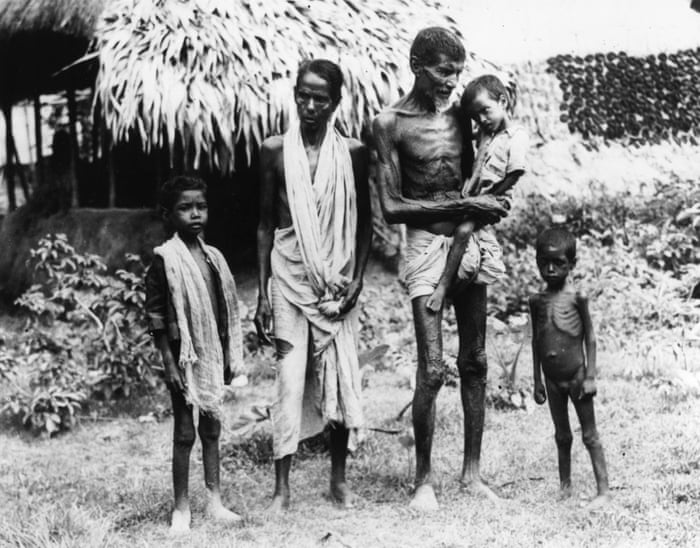
7. There were primarily three supplies – tube wells, rivers and large earthen tanks. Tube wells were relatively safe but rivers and tanks were susceptible to cholera contamination. During drier months, earthen tanks dried up partially, creating stagnancy and ideal breeding grounds for malaria vector mosquitoes. Landlords barely went for tube wells and when war time befell Bengal, the conditions of existing wells worsened.
8. Japanese occupation of Burma was the stage buildup phase for the Great Bengal Famine. Japan attacked Burma in late December 1941. This led to exodus of Indians in Burma to India. Bengal province, Assam province and Manipur princely state were the ones where refuge influx was maximum. This led to food crisis in Bengal. On top of that, Allied forces retreated to India from Burma and claimed a share on supplies and thereby further stretching the food supplies.
9. In March 1942, Rangoon fell to Japanese forces. Indian imports of rice from Burma were totally cut off. In April 1942, Japan bombed merchant ships in Bay of Bengal, sinking 100,000 tons of shipping. Japanese raids were putting strain on railways and the civil unrest in India in form of Quit India Movement due to failure of negotiations between Indian National Congress and British for offering Dominion Status to India caused further troubles. Failure of the negotiations made British under command of Churchill to take authoritarian stance and they arrested and jailed Indian leadership for two years. The result was that Indian political activists, without their leadership started sabotaging government properties like railways, post office, telegraph, bridges, factories etc. Additionally, railway lines were dismantled by British to prevent the Japanese from potentially using them for invading India – the “Crown Jewel” of British Empire. This created problems for transport of civil supplies and relief.
10. Bengal was close to the war front and naturally saw an influx of Allied forces from all over the world starting 1942. This influx led to displacement of nearly 150,000 individuals from their homes and villages that were requisitioned for military use with no compensation whatsoever. Food and other supplies were diverted for military use, further stretching food supplies. The British government took a policy for forcing private firms to sell goods for military forces at low price and charge whatever they want for the leftovers to be sold in domestic market. This led to ‘cloth famine’ as well when cloth prices more than quadrupled by mid-1943.
11. Assuming the Japanese forces may invade British India through Bengal, British government adopted the Denial Policy and set in motion the ‘Scorched-Earth’ initiative in March 1942. As part of this policy and initiative, surplus food grains (primarily rice) in Barisal (then Bakarganj), Khulna and Midnapore were destroyed or aggressively purchased by government officials). The idea was to ensure that if Japan invaded they shouldn’t have access to food supplies. This led to further scarcity and inflation.
12. Boat denial was part of the overall denial policy adopted by the British in April 1942. The government confiscated boats in coastal areas that could accommodated at least 10 people at once. The idea was to deny transport for Japanese troops in an event of possible Japanese invasion. By end of March, army had confiscated more than 46,000 boats which created the transport backbone for almost every economic class – from fishermen to artisans to farmers. The boats were primarily used for moving raw, semi-finished and unfinished goods. Initially the government paid heftily for the boats to the owners. The owners used the money to quickly buy food and clothes as they couldn’t store the rupee notes that were used. The paper used for printing the notes were vulnerable to white ant attacks. This abrupt purchase of food and clothes lead to further inflation that was already caused by factors mentioned in points 8 through 11 above.

13. The British introduced the Defence of India Act, 1939 in 1941, allowing provinces and princely states to impose barriers on inter-provincial trades. This was implemented by the provinces and princely states by mid-1942. The idea used by provincial governments was to ensure that local population didn’t revolt and stayed well-fed. This was one of the several pathetic policies that the British government introduced, leading to further crisis of food and further inflation in Bengal.
14. This was yet another pathetic policy that the colonial government took. At that time, Bengal and in particular, Calcutta (now Kolkata) was the hub for wartime production including heavy machinery, textile and armaments. 80% of all requirements of Asian theater was produced in Kolkata or the then Calcutta. To keep those people employed and prevent them for leaving, the British government introduced ‘Prioritized Distribution’ in August 1942. People were divided into two classes – Priority and Non-Priority. Priority class were those that contributed to war efforts in ways such as production, military services, medical services etc. They received rationed rice and essentials, often at low and discounted prices. The non-priority group – mostly the farmers, peasants and poor people – were left to fight over whatever they could put their hands on. So, the rural populace remained unfed while the urban populace involved in war efforts or sympathetic to British rule had access to rice diverted from rural areas.
15. During winter, Bengal was hit by outbreak of Brown Spot Disease caused by Cochliobolus miyabeanus fungus. This affected the rice crop.
16. Through Bay of Bengal, a massive cyclone entered Bengal on 16th October. The landfall was in South 24 Paraganas and Midnapore. It claimed lives of 190,000 cattle and 14,500 lives. The cyclone was responsible for destruction of paddy stocks present with dealers, cultivators and consumers. The atmospheric conditions created by the cyclone resulted in sudden spike in malaria incidences.
17. Three storm surges followed the cyclone. These storm surges had hit on October 16 and October 17. The result was complete destruction of Midnapore’s seawalls. Sea water managed to flood large areas of Tamluk and Contai.
18. Eventually, the cyclone and the storm surges created large waves that swept over 1,200 square kilometers inland with nearly 1,000 square kilometer coming under the clutches of floods. Nearly 8,300 square kilometers of land were destroyed by torrential rains and wind.
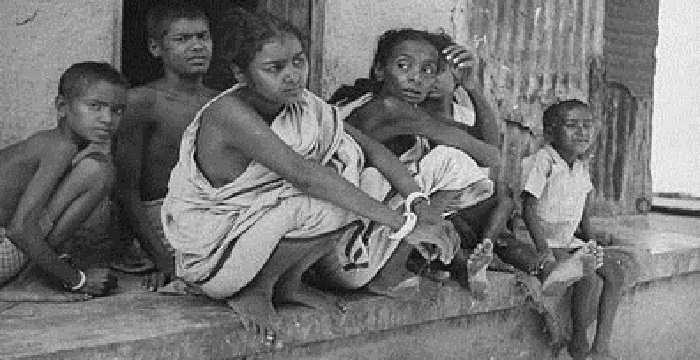
19. The cyclone and the storm surges destroyed 7,400 villages in Bengal. Nearly 1,600 villages had to deal with stagnant flood waters for weeks and widespread dysentery, cholera and other water-borne diseases affected people. 1,900 schools, 527,000 houses were destroyed and nearly 1,000 square miles of highly fertile paddy lands of Bengal province were destroyed. At the same time, standing crop over 3,000 square miles was also damaged.
20. The Brown Spot Disease that started before the cyclone took a massive form after the cyclone as the fungal spores managed to travel far. The release of the spores took place at a very vital time when the rice crop was most vulnerable. The outbreak was one of the most devastating in the entire history of plant pathological literature.
21. By end of October 1942, significant shortfall on yield was forecast and traders warned of an impending famine but the government paid no heed to the same. The government stayed callous because previous forecasts were nowhere even close to being accurate.
22. On December 20, 1942, Japan conducted the first air raid on Calcutta. The air raid took place in broad daylight and hundreds of Japanese planes flew over Calcutta with absolutely no allied resistance. A week-long raid led to thousands of people leaving the city. Because of this, the dealers of food grains closed their shops. The government wanted the ‘Priority’ people to stay fed and hence, they seized stocks from wholesale dealers of rice. That was the impending master stroke of the callous British government and traders lost their faith in government. The food crisis just started!
23. Amartya Sen analyzed the condition and concluded that despite all hardships of 1942, the rice yield and supply for 1943 was only 5% lower in average compared to previous 5 years. On top of that, the yield was 13% higher compared to 1941’s yield when there was no famine at all. In addition to that, there were carryover stocks from previous yield. Together, there should have been enough rice to cover three week’s supply and with some food relief, Bengal could have ridden it out. The situation wasn’t really that bad that widespread deaths would occur because of starvation. The famine was a direct result of policy failure and unequal income and food distribution.
24. The denial policy adopted by British in April, especially boat denial policy led to inflation in south-eastern Bengal. This along with inter-provincial trade barriers led to massive price rice. To control that, the government introduce price control that failed because a black market was created. Government tried to break the black market three times but completely failed. Eventually on 11 March, 1943, price controls were removed but immediate consequence was dramatic surge in rice price. After extreme inflation between March and May, the first death by starvation was reported in Bengal in the month of May.
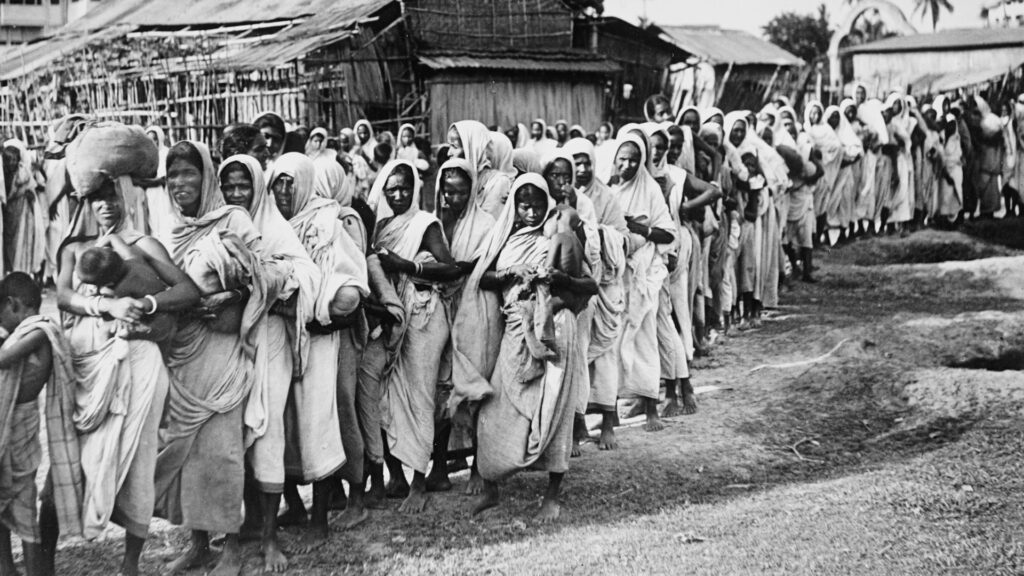
25. Between months of April and May in year 1943, the government tried a propaganda stating that the food shortage was caused by hoarding arising out of speculation and that there was no shortage in reality. Public didn’t really believe this.
26. On 18th of May 1943, government decided to abolish trade barriers to promote free trade. There was a temporary drop in rice prices in Bengal but removal of the barriers led the Bengal traders to rush to Bihar and Orissa to acquire stocks. This pushed up the prices there. In June government started Food Drive in which places were raided to get hold of hoarded stock. Nothing was found by government. A second food drive followed in July and it too was a complete failure.
27. Abolition of trade barrier led to rapid increase in rice prices in the provinces that neighbored Bengal. This forced the government to again abolish free trade in late July. In August, price control was again brought in by the government but by late 1943, rice was being sold in black market at 10 times higher prices compared to late 1942.
28. The ruling British government had a Famine Code that was established long time back. The code was however not invoked. Famine was not declared. Failure to invoke the code resulted in failure to acquire seizable aid.
29. Starting late 1942 till as early as 1944, many high-ranking government officials in India made repeated requests for food imports to India only to be either turned down or bargained down to useless levels by Britain’s War Cabinet.
30. The then Viceroy of India – Linlithgow started making food import appeals to Leo Amery – Secretary of State for India. Linlithgow initially kept modest possible tone and Amery sent letters to war cabinets. In his letters to War Cabinet, Amery didn’t mention anything about the famine but stated that aid was needed to feed the industries of Calcutta. The War Cabinet responded by promising a very small amount of wheat that was intended for Western India and not Bengal.

